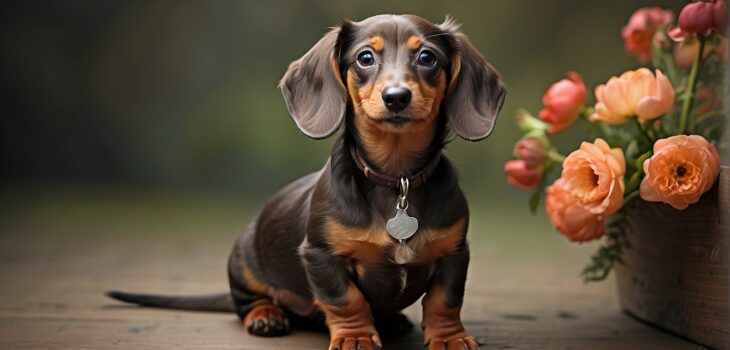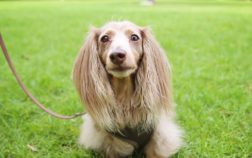Let’s take a journey into the intriguing world of Dachshund breeding, where we uncover the fascinating history and purpose behind these unique canine companions. From their origins in 16th century Germany to their present-day roles as both beloved pets and skilled hunters, Dachshunds exude a captivating charm that has captured the hearts of dog enthusiasts throughout the ages. Discover how their distinctive elongated bodies and determined spirits were carefully crafted through selective breeding, ensuring they excelled in the very tasks they were originally bred for. So, join us as we unravel the secrets behind the captivating history and purpose of Dachshund breeding.
Origins of Dachshund Breed
Early Development of Dachshunds
The Dachshund breed has a rich history that dates back several centuries. The breed originated in Germany, where it was developed as a hunting dog with a unique purpose. The early development of Dachshunds can be traced back to the 15th century, when German breeders began crossing various types of hounds to create a versatile and tenacious hunting dog.
Breeds That Contributed to Dachshund
Several different breeds played a role in the development of the Dachshund. The exact combination of breeds is not known for certain, but it is believed that scent hounds and terriers were among the ancestors of the Dachshund. The scent hounds provided the Dachshund’s keen sense of smell, while the terriers contributed to their wiry and resilient coat.
Dachshunds’ Purpose in History
In their early years, Dachshunds were primarily bred for their hunting abilities. The unique body shape of the Dachshund, with their long and low stature, was specifically designed to excel in pursuing and flushing out burrowing animals, such as badgers and rabbits. Dachshunds were highly valued for their courage, tenacity, and ability to navigate through underground tunnels to reach their prey.

Characteristics of Dachshunds
Physical Traits of Dachshunds
Dachshunds have distinct physical features that set them apart from other breeds. Their most prominent characteristic is their elongated body, which is low to the ground. This unique body shape allows them to access tunnels and burrows with ease. Dachshunds come in three different coat types: smooth, wirehaired, and longhaired. They also have long ears, expressive eyes, and a well-muscled chest.
Temperament and Behavior
Dachshunds are known for their lively and sometimes stubborn personalities. They are intelligent dogs and can be quite independent, which can make training a challenge if not approached with patience and consistency. Dachshunds are typically devoted and loyal to their families, but they can also be reserved or wary of strangers. Their hunting instincts may also manifest in their behavior, often being curious, alert, and tenacious.
Development of Dachshund Breeding
First Dachshund Breed Club
The establishment of the first Dachshund breed club played a significant role in the development and recognition of this breed. The Deutscher Teckelklub (German Dachshund Club) was founded in Germany in 1888. This club focused on promoting responsible breeding practices and preserving the breed’s unique hunting abilities. The club also established breed standards to guide future breeding efforts.
Standardization of Dachshund Breeds
Over time, breeders sought to standardize the different varieties of Dachshunds by refining their physical characteristics and temperament traits. The smooth, wirehaired, and longhaired coat types were recognized as distinct varieties within the breed. Breed standards were established to ensure consistency in size, proportions, and other physical attributes across each variety of Dachshund.

Recognition by Kennel Clubs
The Dachshund breed gained recognition and popularity outside of Germany as well. National kennel clubs, such as the American Kennel Club (AKC) and the Kennel Club (UK), officially recognized the breed and established breed standards of their own. This recognition provided further validation to breeders and ensured that Dachshunds’ unique traits and characteristics were preserved and promoted.
Types of Dachshunds
Variations in Coat Types
Dachshunds exhibit three distinct coat types: smooth, wirehaired, and longhaired. The smooth-coated Dachshunds have sleek, shiny fur that requires minimal grooming. Wirehaired Dachshunds, on the other hand, have a coarse and dense double coat that provides them with extra protection for their hunting expeditions. Longhaired Dachshunds feature long and flowing hair, adding an elegant touch to their appearance.
Different Sizes of Dachshunds
Dachshunds come in two different sizes: standard and miniature. The standard Dachshunds typically weigh between 16 and 32 pounds, while the miniature Dachshunds weigh around 11 pounds or less. Despite the size difference, both standard and miniature Dachshunds possess the same distinct characteristics and traits, making them equally lovable and capable companions.
Distinctive Features of Each Type
Each variety of Dachshund has its own distinctive features. Smooth-coated Dachshunds are known for their sleek appearance and ease of grooming. Wirehaired Dachshunds have a rugged and wiry coat that gives them a more rugged look. Longhaired Dachshunds, with their flowing locks, have an air of elegance and refinement. Regardless of coat type, all Dachshunds share the same adorable long body, short legs, and expressive eyes that make them unmistakably Dachshund.
Dachshunds’ Original Purpose
Hunting Abilities of Dachshunds
Dachshunds were bred to be efficient hunters, particularly for hunting burrowing animals like badgers. Their long, low bodies allow them to enter and navigate through dense underground tunnels with ease. Dachshunds possess an excellent sense of smell, enabling them to track the scent of their prey over long distances. Their bravery, determination, and tenacity make them adept at flushing out and capturing their target.
Dachshunds as Badger Dogs
The name “Dachshund” translates to “badger dog” in German, highlighting their original purpose. In the past, Dachshunds were primarily used for hunting badgers, which were considered agricultural pests. Their compact size and fearless nature made them ideal for this task. Dachshunds would pursue badgers into their burrows, often facing formidable opponents several times their size.
Other Targeted Prey
While badgers were their main quarry, Dachshunds were versatile enough to hunt various other animals as well. They were skilled at tracking and hunting rabbits, foxes, and even wounded deer. Their adaptability and determination made them prized companions for hunters in German hunting traditions.
Dachshunds as Companion Dogs
Shift in Dachshunds’ Roles
As hunting practices evolved and led to a decline in the need for hunting dogs, Dachshunds found new roles as beloved companion dogs. They transitioned from being working dogs to cherished family pets. Their loyal and affectionate nature, coupled with their distinctive appearance, made them highly sought after by dog enthusiasts around the world.
Adaptation to Urban Living
Dachshunds’ adaptability and moderate exercise needs allowed them to thrive in urban settings. Their size, combined with their low-maintenance grooming requirements, made them suitable for apartment living. While they still retain their hunting instincts, Dachshunds have successfully embraced the role of a lap dog and adapted to the comforts of modern life.
Temperament for Family Life
Dachshunds have proven to be excellent companions for families of all sizes. They are known for their friendly and attentive nature towards their owners, often forming strong bonds with their human family members. Dachshunds are typically good with children and can coexist peacefully with other pets when properly socialized. Their loyalty, affection, and playful disposition make them a joy to have as part of a loving family.
Dachshund Breeding Challenges
Inherited Health Issues
While Dachshunds have many endearing traits, they are prone to certain health issues due to their unique body structure. The elongated spine puts them at risk of developing intervertebral disc disease (IVDD), a condition that can lead to back problems and potential paralysis. Other health concerns include eye disorders, obesity, and dental issues. Responsible breeders strive to address and minimize these health concerns through careful breeding practices and health testing.
Breeding for Conformation vs. Health
The demand for Dachshunds with specific physical traits, such as a certain coat type or color, has sometimes overshadowed the importance of breeding for overall health and longevity. Breeders face the challenge of balancing the desirable characteristics of the breed with the well-being of the individual dogs. Ethical breeders prioritize health-related considerations and work towards producing Dachshunds that are both physically sound and true to breed standards.
Ethical Considerations
In recent years, the breeding of Dachshunds has come under scrutiny due to concerns about overbreeding, irresponsible breeding practices, and the proliferation of puppy mills. Ethical considerations include ensuring the health and well-being of the breeding dogs, responsible breeding for preservation of the breed’s genetic diversity, and promoting responsible ownership to prevent abandonment or relinquishment of Dachshunds.
Popularity and Cultural Impact
Rise in Dachshund Popularity
Dachshunds have captured the hearts of people worldwide, resulting in a rise in their popularity as pets. Their quirky appearance, affectionate nature, and unique personality traits have made them highly sought after by dog lovers of all ages. Dachshunds have made their mark as one of the most recognizable and beloved dog breeds globally.
Dachshunds in Art and Media
Dachshunds have also made their mark in art, literature, and popular media. They have been depicted in numerous paintings, sculptures, and illustrations, showcasing their distinctive silhouette and endearing expressions. Dachshunds have appeared in movies, cartoons, and advertisements, further cementing their place in popular culture.
Symbolism and Mascot Representation
Dachshunds have become iconic representatives of certain cultures and organizations. In Germany, they are seen as a symbol of national pride and are associated with traditional folklore and customs. They have been chosen as mascots for various sports teams, brands, and events, highlighting their widespread recognition and appeal.
Current Trends in Dachshund Breeding
Designer Dachshund Crossbreeds
As with many popular dog breeds, Dachshunds have also become part of the so-called “designer dog” trend. Crossbreeding Dachshunds with other breeds, such as Poodles or Labrador Retrievers, has resulted in new hybrid breeds, often referred to as “Doxiepoos” or “Dachshund Retrievers.” While these crossbreeds can inherit traits from both parent breeds, it’s essential to carefully consider the health implications and ensure responsible breeding practices.
Specialty Lines and Colors
Dachshund enthusiasts and breeders have developed specialty lines that focus on specific coat colors or patterns. These include dapple, piebald, and brindle variations. While these specialty lines can result in visually striking Dachshunds, breeders must prioritize health and not sacrifice the overall well-being of the breed in favor of specific coat colors or patterns.
Breeding for Specific Traits
Some breeders may focus on breeding Dachshunds specifically for certain traits, such as smaller sizes or exaggerated physical features. While these breeding efforts may cater to individual preferences, it is crucial to ensure that the health and temperament of the breed are not compromised in the pursuit of specific traits. Responsible breeders strive for balance and consider the overall welfare of the dogs they breed.
Conclusion
Enduring Legacy of Dachshund Breeding
The Dachshund breed’s enduring legacy lies in its rich history as a skilled hunting dog and its adaptability as a beloved family companion. Dachshund breeding has evolved over the years, aiming to preserve the breed’s distinctive features and temperament, while also addressing health challenges associated with their unique body structure.
Continued Evolution and Preservation
The future of Dachshund breeding rests on responsible and ethical practices that prioritize the health and well-being of the breed. Breeders must strike a balance between preserving the Dachshund’s breed characteristics and addressing potential health issues. Through ongoing efforts, Dachshunds will continue to captivate dog lovers around the world and leave a lasting legacy as an iconic and cherished breed.




